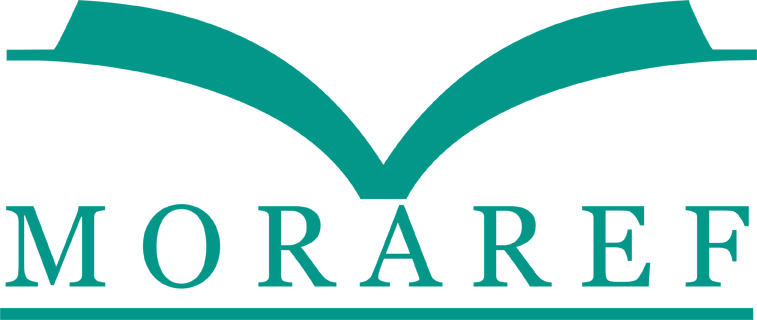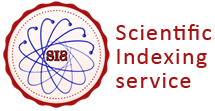Relationship of Sociodemography and Dental Visits With Dental Caries and Oral Hygiene At Kapuk 03 Pagi Public Elementary School in West Jakarta
Abstract
In Indonesia, children still have a high incidence of dental caries; among children aged 5 to 9 years, the rate was 92.6%, and among those aged 10 to 14 years, it was 73.4%. Risk factors that contribute to childhood caries include child behavior and dental care utilization, family dynamics, and environmental. The health of teeth and mouths can be achieved with good oral hygiene. Oral hygiene can be influenced by gender, age, parental education, and dental visits. The study aimed to determine the relationship between sociodemography and dental visits with dental caries and oral hygiene at public elementary school in West Jakarta. This research is a cross sectional observational analytic using a questionnaire involving 174 respondents and direct examination of the oral cavity to obtain dental caries and oral hygiene. The results show that the p-values for the association between dental caries and gender, age, father’s education, mother’s education, and dental visits are 0.924, 0.588, 0.222, 0.172, and 0.115, respectively, all of which are greater than the significance level of 0.05. Similarly, the p-values for the association between oral hygiene and gender, age, father’s education, mother’s education, and dental visits are 0.231, 0.068, 0.064, 0.509, and 0.427, respectively, all exceeding the significance level of 0.05. In conclusion, the dental caries status of students at Kapuk 03 Pagi Public Elementary School is low, and their oral hygiene status is good. There is no correlation between dental caries and oral hygiene with gender, age, father's education and mother's education, and dental visits.
Keywords
Full Text:
PDFReferences
P. T. Aji, E. Rizkasari, and R. Anisa, “Implementasi Pentingnya Menjaga Kesehatan Gigi dan Mulut Di Sekolah Dasar 2Giriwondo Karanganyar,” Inisiat. J. Dedik. Pengabdi. Masy., vol. 2, no. 1, pp. 1–9, 2023, doi: 10.61227/inisiatif.v2i1.100.
Adam, Zavera, J. D’Arc, Ratuela, Ellen, and Jeineke, “Tingkat Pengetahuan Tentang Kebersihan Gigi Dan Mulut Siswa Sekolah Dasar,” Indones. J. Public Heal. Community Med., vol. 3, no. 1, p. 6, 2022.
Kemenkes RI, “Laporan Nasional Hasil Riset Kesehatan Dasar (Riskesdas) Indonesia tahun 2018,” Riset Kesehatan Dasar 2018. 2018.
R. Chairunnisa, T. Astoeti, and C. Panjaitan, “Pemanfaatan Teledentistry Untuk Deteksi Karies Gigi Di Masa Pandemi COVID-19: A Scoping Review,” J. Kedokt. Gigi Terpadu, vol. 4, no. 1, pp. 7–10, 2022.
V. Apro, S. Susi, and D. P. Sari, “Dampak Karies Gigi Terhadap Kualitas Hidup Anak,” Andalas Dent. J., vol. 8, no. 2, pp. 89–97, 2020, doi: 10.25077/adj.v8i2.204.
W. A. Wibowo, R. I. Roestamadji, and R. P. Rahayu, “Socioeconomic characteristics of the parents and the risk prediction of early childhood caries,” Dent. J. (Majalah Kedokt. Gigi), vol. 50, no. 1, p. 23, 2017, doi: 10.20473/j.djmkg.v50.i1.p23-27.
Q. A’yun, J. Hendrartini, A. S. Santoso, and L. E. Lugroho, “Uji Sensitivitas dan Spesifisitas Perangkat Lunak ‘Prediktor Karies Anak’ (The sensitivity and specificity test of software for dental caries prediction in children),” Dent. J. (Majalah Kedokt. Gigi), vol. 47, no. 1, p. 45, 2014, doi: 10.20473/j.djmkg.v47.i1.p45-51.
Kiswaluyo, “Hubungan Karies Gigi Dengan Umur dan Jenis Kelamin Siswa Sekolah Dasar Di Wilayah Kerja Puskesmas Kaliwates dan Puskesmas Wuluhan Kabupaten Jember,” Stomatognatic (J.K.G. Unej), vol. 7, no. 1, pp. 26–30, 2015.
H. Mutiara and F. N. E. Eddy, “Peranan Ibu dalam Pemeliharaan Kesehatan Gigi Anak dengan Status Karies Anak Usia Sekolah Dasar,” Med. J. Lampung Univ., vol. 4, no. 8, pp. 1–6, 2015. Available: http://juke.kedokteran.unila.ac.id/index.php/majority/article/view/1464 Diakses tanggal 22 November 2019.
H. Khalida Zia, D. Afriza, S. Perilaku, and M. Gigi, “Hubungan Pengetahuan, Sikap Dan Perilaku Ibu Terhadap Kebiasaan Menyikat Gigi Anak Kata Kunci Abstrak,” pp. 43–48, 2014.
M. Abdat, “Pengetahuan Dan Sikap Ibu Mengenai Gigi Sulung Anaknya Serta Kemauan Melakukan Perawatan,” Cakradonya Dent. J., vol. 10, no. 1, pp. 18–26, 2018, doi: 10.24815/cdj.v10i1.10611.
M. Sherlyta, R. Wardani, and S. Susilawati, "Tingkat Kebersihan Gigi dan Mulut Siswa Sekolah Dasar Negeri di Desa Tertinggal Kabupaten Bandung," J. Kedokt. Gigi Univ. Padjadjaran, vol. 29, no. 1, pp. 69–76, 2017, doi: 10.24198/jkg.v29i1.18607.
G. D. J. S. Fitri, Haria, Nila Kusuma, Fildzah Nurul Fajrin and H. H. Rahmi Khairani Aulia, “Description of the Simplified Oral Hygiene Index (OHI-S) in Stunting Children,” 2023.
T. A. Oyedele, “Erratum: Social predictors of oral hygiene status in school children from suburban Nigeria. [Braz Oral Res. (2019), 33, e022],” Braz. Oral Res., vol. 33, pp. 1–10, 2019, doi: 10.1590/1807-3107BOR-2019.VOL33.0022ERRATUM.
Å. A. Mbawalla HS, Masalu JR, “Socio-demographic and behavioural correlates of oral hygiene status and oral health related quality of life, the Limpopo - Arusha school health project (LASH): A cross-sectional study,” BMC Pediatr, vol. 9, no. 1, 2010, doi: 10.1186/1471-2431-10-87.
S. K. Mallineni, A. Alassaf, B. Almulhim, and S. Alghamdi, “Influence of Tooth Brushing and Previous Dental Visits on Dental Caries Status among Saudi Arabian Children,” Children, vol. 10, no. 3, pp. 1–11, 2023, doi: 10.3390/children10030471.
S. S. . Sunaryanti, “Hubungan Karies dengan Status Gizi pada Anak Pra Sekolah di TK Pertiwi Kelurahan Daleman Kecamatan Tulung Kabupaten Klaten,” J. Ilm. Rekam Medis dan Inform. Kesehat., vol. 6, pp. 33–40, 2016. Available: https://ojs.udb.ac.id.
T. Ermawati, “Profil Kebersihan dan Perilaku Menjaga Kesehatan Gigi dan Mulut pada Lansia di Desa Darsono Kabupaten Jember,” Ikesma, vol. 12, no. 2, pp. 77–83, 2016.
K. Williams et al., “Standard 6: Age groups for pediatric trials,” Pediatrics, vol. 129, 2015, doi: 10.1542/peds.2012-0055I.
L. Suryani, “Hubungan Tingkat Pendidikan dan Penghasilan Kepala Keluarga dengan Karies Gigi Anak pada Masyarakat Desa Seubun Ayon Kecamatan Lhoknga Aceh Besar Tahun 2019,” J. Aceh Med., vol. 4, no. 1, pp. 85–93, 2020.
P. E. Cahyadi, S. A. Handoko, and N. W. A. Utami, “Hubungan Konsumsi Snack, Menyikat Gigi dan Kunjungan Dokter Gigi terhadap Karies pada Siswa Kelas VII SMP Santo Yoseph Denpasar,” Intisari Sains Medis, vol. 9, no. 3, pp. 35–40, 2019, doi: 10.15562/ism.v9i3.264.
M. Jamilah, L. Suryani, and C. Zaman, “Analisis Kejadian Karies Gigi Pada Anak SD Al-Azhar di Kelurahan Bangun Jaya Kota Pagar Alam,” J. Kesehat. Saelmakers PERDANA, vol. 5, no. 1, pp. 167–173, 2022, doi: 10.32524/jksp.v5i1.401.
A. J. . Rattu, D. Wicaksono, and V. E. Wowor, “Hubungan antara Status Kebersihan Mulut dengan Karies Siswa Sekolah Menengah Atas Negeri 1 Manado,” e-GIGI, vol. 1, no. 2, 2013, doi: 10.35790/eg.1.2.2013.3216.
D. S. Ningsih, “Hubungan Jenis Kelamin Terhadap Kebersihan Rongga Mulut Anak Panti Asuhan,” ODONTO Dent. J., vol. 2, pp. 14–19, 2015.
L. Hidayati, D. W. A. Fatmawati, S. Suhartini, and A. W. S. Dharmayanti, “The Relationship between Dental Caries and Oral Hygiene of Children 7-12 Years Old at SDN Baletbaru Jember,” J. Kesehat. Gigi, vol. 9, no. 1, pp. 25–29, 2022, doi: 10.31983/jkg.v9i1.8701.
K. Khotimah, “Faktor - Faktor Yang Berhubungan dengan Kejadian Karies Gigi Pada Anak Usia 6-12 Tahun di SD Negeri Karangayu 03 Semarang,” ejournal STIKES Telogorejo, vol. 014, pp. 1–10, 2013.
L. Linda, A. Aida, S. Sukarsih, and N. Nurutami, “Hubungan Pengetahuan dan Perilaku Menyikat Gigi dengan Status OHI-S Pada Murid Kelas IV SDN 07/IX Kabupaten Muaro Jambi,” Midwifery Heal. J., vol. 7, no. 2, p. 89, 2022, doi: 10.52524/midwiferyhealthjournal.v7i2.139.
T. Sampakang, P. N. Gunawan, and . J., “Status Kebersihan Mulut Anak Usia 9-11 Tahun Dan Kebiasaan Menyikat Gigi Malam Sebelum Tidur Di Sdn Melonguane,” e-GIGI, vol. 3, no. 1, pp. 1–6, 2015, doi: 10.35790/eg.3.1.2015.6406.
R. Gayatri, “Hubungan Tingkat Pengetahuan dengan Perilaku Pemeliharaaan Kesehatan Gigi Anak SDN Kauman 2 Malang," J. Heal. Educ., vol. 2, no. 2, pp. 201–210, 2017, doi: 10.1080/10556699.1994.10603001.
D. E. Purwanti and Almujadi, “Pengaruh Tingkat Pendidikan dan Pekerjaan Orang Tua terhadap Jumlah Karies Siswa Anak Sekolah Dasar,” J. Kesehat. Gigi, vol. 4, no. 2, pp. 33–39, 2017.
C. Angelica, L. S. Sembiring, and W. Suwindere, “Pengaruh Tingkat Pendidikan Tinggi dan Perilaku Ibu terhadap Indeks def-t pada Anak Usia 4‒5 tahun,” Padjadjaran J. Dent. Res. Students, vol. 3, no. 1, p. 20, 2019, doi: 10.24198/pjdrs.v3i1.22484.
Busman, D. Elianora, and S. N. Atigah, “Status Kesehatan Rongga Mulut Anak Dilihat Dari Kepedulian Orang Tua Tentang Kebersihan Rongga Mulut Anak dan Status Gizi di SD Negeri No. 98/III Desa Baru Lempur, Kerinci,” Menara Ilmu, vol. XII, no. 10, pp. 14–23, 2018. Available: https://www.jurnal.umsb.ac.id/index.php/menarailmu/article/download/1008/864.
C. Rompis, D. Pangemanan, and P. Gunawan, “Hubungan Tingkat Pengetahuan Ibu tentang Kesehatan Gigi Anak dengan Tingkat Keparahan Karies Anak TK di Kota Tahuna,” e-GIGI, vol. 4, no. 1, 2016, doi: 10.35790/eg.4.1.2016.11483.
P. Andriany, “Perbandingan Efektivitas Media Penyuluhan Poster Dan Kartun Animasi Terhadap Pengetahuan Kesehatan Gigi Dan Mulut,” J. Syiah Kuala Dent. Soc., vol. 1, no. 1, pp. 21–28, 2016.
J. H. Raule and I. K. Harapan, “Tingkat Pendidikan Ibu Dan Status Kebersihan Gigi Dan Mulut Siswa Kelas IV Dan V SD Negeri 51 Manado.,” JIGIM (Jurnal Ilm. Gigi dan Mulut), vol. 1, no. 2, pp. 60–66, 2018, doi: 10.47718/jgm.v1i2.1400.
K. L. G. Babu and G. M. Doddamani, “Dental home: Patient centered dentistry,” J. Int. Soc. Prev. Community Dent., vol. 2, no. 1, pp. 8–12, 2014, doi: 10.4103/2231-0762.103448.
J. Sodri, R. Andhani, and I. Hatta, “Hubungan Pengetahuan, Sikap dan Tindakan Kesehatan Gigi dan Mulut dengan Status Kebersihan Rongga Mulut Perokok,” J. Kedokt. Gigi, vol. 2, no. 1, pp. 32–39, 2018.
DOI: https://doi.org/10.31983/jkg.v11i2.11001
Article Metrics
Refbacks
- There are currently no refbacks.
| View My Stats |











.png)


.png)
.png)









